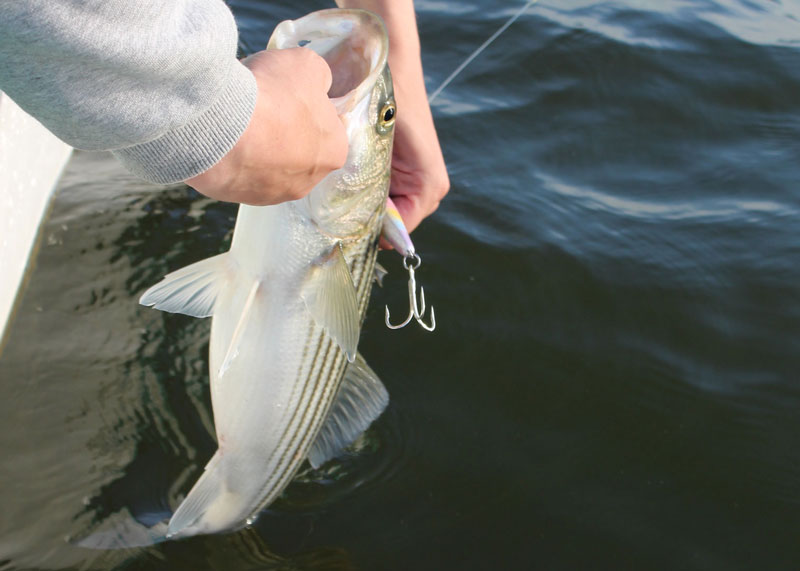If we’ve said it once we’ve said it 1000 times: we need more science. It’s downright shocking how little we know about the populations of the fish that we chase, even the striped bass — despite its massive impacts on our region’s angling opportunities and the economic activity it generates. Much of the science we have on these fish is decades old, and much is blatantly flawed. Fortunately, however, we have a new study on striped bass mortality as it relates to tackle use conducted by the Massachusetts Division of Marine Fisheries, which was recently presented to the Striped Bass Board at the spring Atlantic States Marine Fisheries Committee meeting.

I’d encourage everyone who cares about rockfish to check the study out; the results at this point are partial, but already some spectacularly interesting observations can be made.
- The use of circle hooks in this case had little to no effect on striped bass mortality. A 6/0 J hook resulted in a nine-percent probability of mortality, a 7/0 circle had 10 percent, an 8/0 circle had nine percent, and a 10/0 circle showed 11 percent. While the study didn’t nail down the “why,” in the presentation it’s suggested that the popular circle hook models currently on the market may not be ideal for minimizing gut hooking, or that hook style may not be as important for live bait as for cut bait (previous studies done in Maryland showing lower circle hook mortality had used cut bait, while this one employed live bait).
- Bait results in the most gut-hookings, but the next most injurious type of gear is surface lures. Surface lures resulted in the most foul-hooking, following bait as producing the most visible blood and fish that were obviously weak or unable to swim upon release.
- Lures with treble hooks caused more damage to the fish than singles, and multiple trebles on a single lure caused the most damage. However, multiple single hooks on a lure were about as damaging as a single treble.
- Increased water temperature was validated as a major contributor to decreased vitality in the fish being released. Interestingly, however, there was little variation found among fish caught in water from 45 to 75 degrees. Above 75 degrees far more fish displayed weakness or a complete inability to swim.
Interesting takeaways, right? These results seem to debunk some of the factors we had considered to be “known” and based in science, and raises some new ones that hadn’t been considered before. We have to remind ourselves that this study was done hundreds of miles north of the Chesapeake, in oceanic waters where temperatures don’t get nearly as high as they do here in the Bay. Results in Massachusetts don’t necessarily translate to fact here on the Chesapeake Bay. We also have to remember that the studies that have been performed here are so old that livelining with spot hadn’t yet replaced chumming as the main mode of bait fishing for rockfish, and that we had different tackle on the market back then. So, we have to be very careful about drawing solid conclusions from any of these studies. In fact, there’s only one conclusion that it makes crystal clear: we need more science.